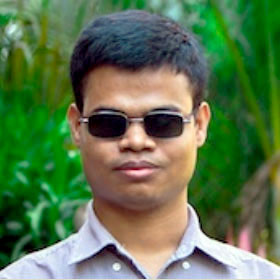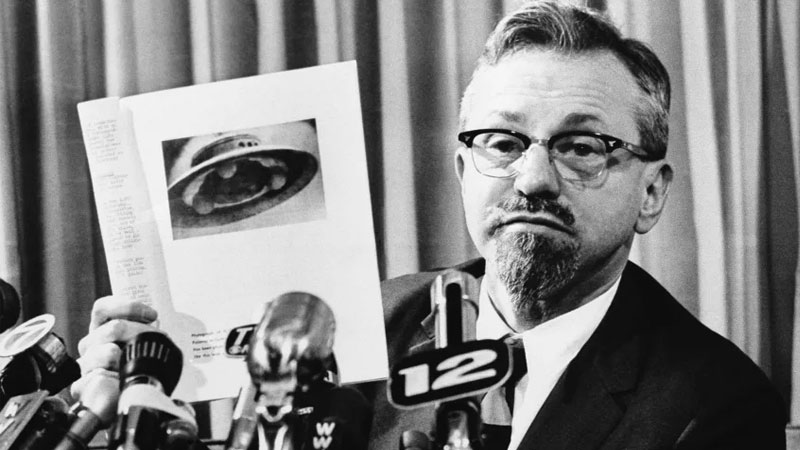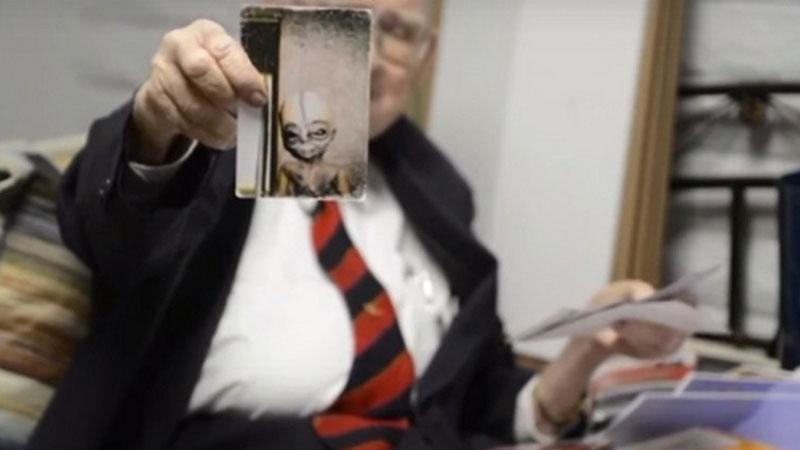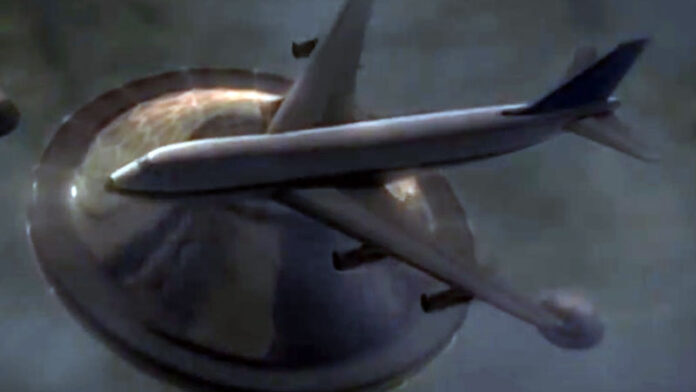
On November 17, 1986, the special flight was scheduled to go from Paris to Reykjavik, Iceland, in the North Atlantic and Greenland, then through Canada to Anchorage, Alaska, and finally across the Pacific to Tokyo.
Veteran Captain Kenju Terauchi, co-pilot Takanori Tamefuji, and flight engineer Yoshio Tsukuba were manning the aircraft when it finally entered Alaskan airspace at 5:09 a.m. local time.
Traveling at a speed of about 950 km/h at 35,000 feet, they were initially contacted by Anchorage Air Traffic Control to confirm their presence and position. The crew was told to turn 15 degrees to the left toward Talkeetna on a 215-degree bearing.
Unknown Objects Appear
About two minutes after crossing Alaska, Captain Terauchi noticed something with lights about 2,000 feet below and 30 degrees to the left of his aircraft. At first, he thought it was probably an American jet from Eielson or Elmendorf Air Force Base patrolling the skies.
It had been a little more than seven minutes after they had initially seen the lights when, without warning, two objects of unknown origin appeared in front of 1628. They seemed to be on top of each other and seemed to shoot lights!
The interior of the 747 cockpit was so illuminated that the crew could feel the heat on their skin.
Terauchi surmised that these objects must be the lights he had seen a few minutes earlier, but he could not understand how they managed to make such a move, a surprising change from their initial position to one in front of 1628.
The two UFOs kept pace with the 747 for several minutes. After 5-7 minutes, the objects changed their position by moving into a side-by-side formation.
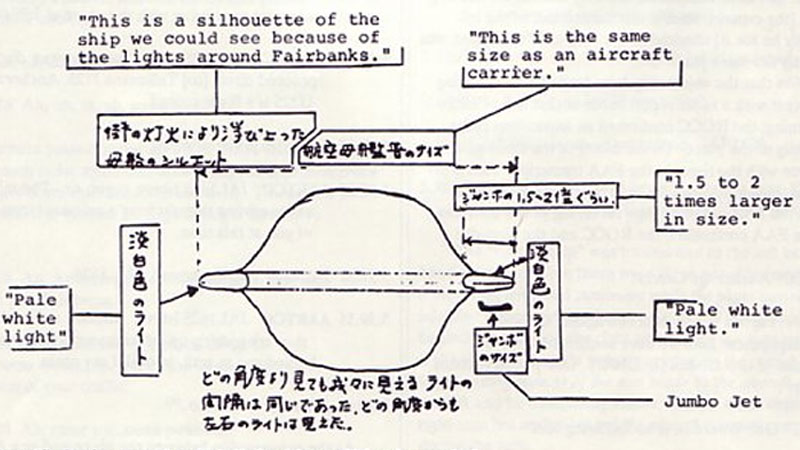
Describing the Flying Objects
The veteran pilot described the lights as being a white-orange color, and were like flames being expelled from jet engines. He has the impression that this “firing” was a way to stabilize the objects. His co-pilot Tamefuji stated that they were like “Christmas lights”, but amber in color.
He said, “I remember red or orange and white light, as well as a faint green and landing light flashing.”
He also added that sometimes they seemed to be weaker, then stronger by repeating this process over and over again.

Flight engineer Tsukuba, who was positioned behind the co-pilot, didn’t have as good a view as the pilot and co-pilot, but he could still see the lights. He stated, “they had lights like the shape of an airplane windows, and they were white and amber.”
The crew decided to radio Anchorage air traffic control to inform them of what was happening and would be in constant contact with them for about half an hour.
The captain asked for a camera so he could validate what they were seeing. He was not familiar with the camera, and was unable to obtain a photograph. Tsukuba then tried his camera, but had problems with focusing, and was also unable to capture the objects for future reference.
After its failed attempt to capture the unknown object on film, the plane began to have jamming problems when it tried to communicate with Anchorage, and requested a frequency change.
Anchorage Air Traffic Control did its best to figure out what was going on with JAL 1628. The fact that the cabin was immersed in light was enough to declare an emergency situation.
Later, after the incident, Terauchi spoke at length about the questions posed by Traffic Control.
“They kept asking about the existence of clouds in the immediate area,” he said.
In reality, Control has asked several times about the clouds if that could be the explanation for what was causing the lights to appear.
Terauchi told Control that they saw only a few light clouds near a distant mountain, but this was far below the plane and could not have been the source of the lights. There were no clouds to be seen anywhere near the altitude of 1628.
Radar Check
When the conversation about the clouds ended, the two UFOs quickly flew to the left. Later, Terauchi talked about trying to find the objects on the radar.
“I thought it would be impossible to find anything on the aircraft’s radar if a large radar hadn’t shown anything, but I calculated the distance to the objects visually and it wasn’t very far.
There was a pale, whitish light fixed in the direction the objects took, moving in line with the aircraft, in the same direction, same speed, and at the same altitude as we were.
I set the digital time radar distance to 20 nautical miles and the radar angle to the horizon and there it was on the screen.
A large, round green object had appeared 7 or 8 miles (13 km to 15 km) away in the direction the UFO was facing. We reported to the Anchorage Control Center that our radar had picked up the object at about 7 or 8 miles and at the 10 o’clock position. We asked if they could catch it on ground radar, but that seemed to be completely impossible.”
Unknown Origin Found
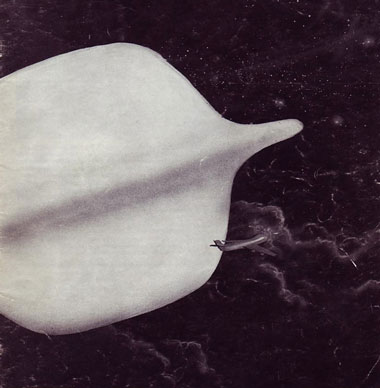
The Elmendorf Regional Operational Control Center began searching on its radar to see if it could detect any unidentified targets.
After a few minutes they also pointed to something they described as a “primary wave return.” This means that they picked up occasional echo radar returns that were not accompanied by a transponder signal.
Finally, JAL 1628 came close to Fairbanks. Terauchi would later explain what happened.
“The lights of the city seemed extremely bright to our eyes that were used to darkness. We were a little above the bright lights of the city and found that the pale white light was still behind us. Suddenly a silhouette of a gigantic spaceship appeared. We must flee quickly!”
The Anchorage Center reported, “JAL 1628 is requesting a 45-degree rightward change of course.”
Terauchi said of this, “It felt like an eternity before I was given permission.”
The plane veered to the right and the AARTCC controller called the Fairbanks approach radar controller to confirm that the short-range radar had a target near the JAL. The approach radar reported no target other than JAL 1628. When the plane came out of the turn and flew toward Talkeetna at an altitude of 31,000 feet, the crew could still see the UFOs.
Planes Sent to Investigate
Several attempts were made to send other planes to the area where JAL 1628 was located to see if they too could see the objects.
A United Airlines passenger jet at 5:40 a.m. and a military TOTEM flight at 5:51 a.m. None of them could detect any anomaly.
After the event, the Federal Aviation Administration (FAA) conducted an investigation into the episode, issuing a final report on March 5 of the following year.
The FAA, in its report, states that the radars captured the JAL plane and its reflection in the clouds that would be present at the site. Such an attempt at explanation was immediately rejected, as the clouds present would not produce such an effect, as they were a little above the mountain range and
